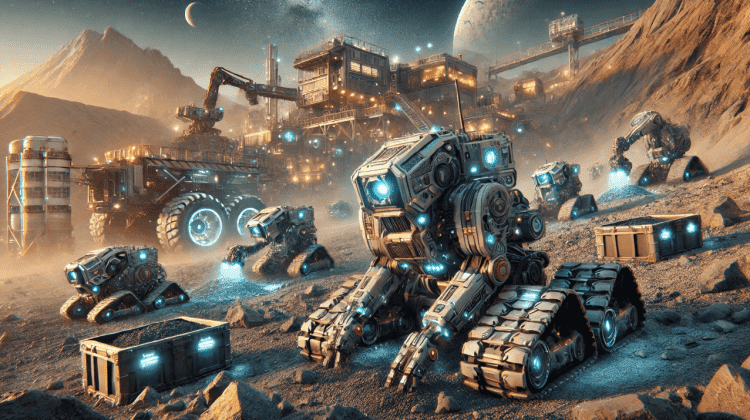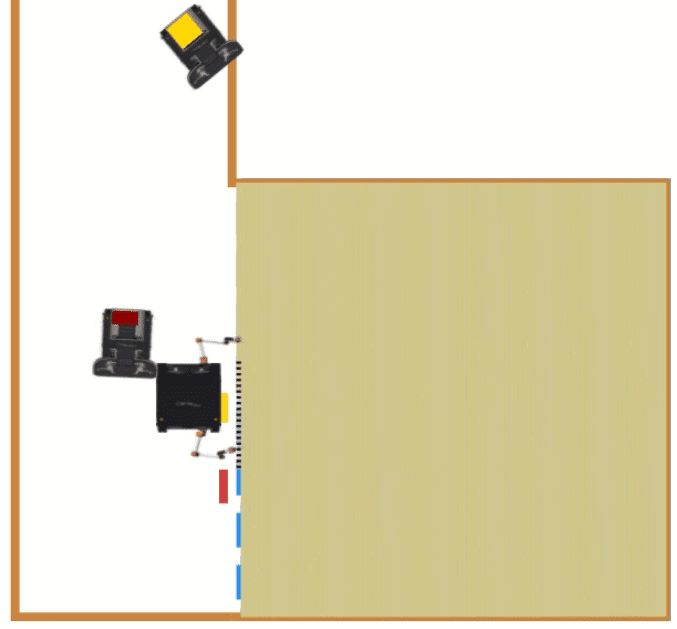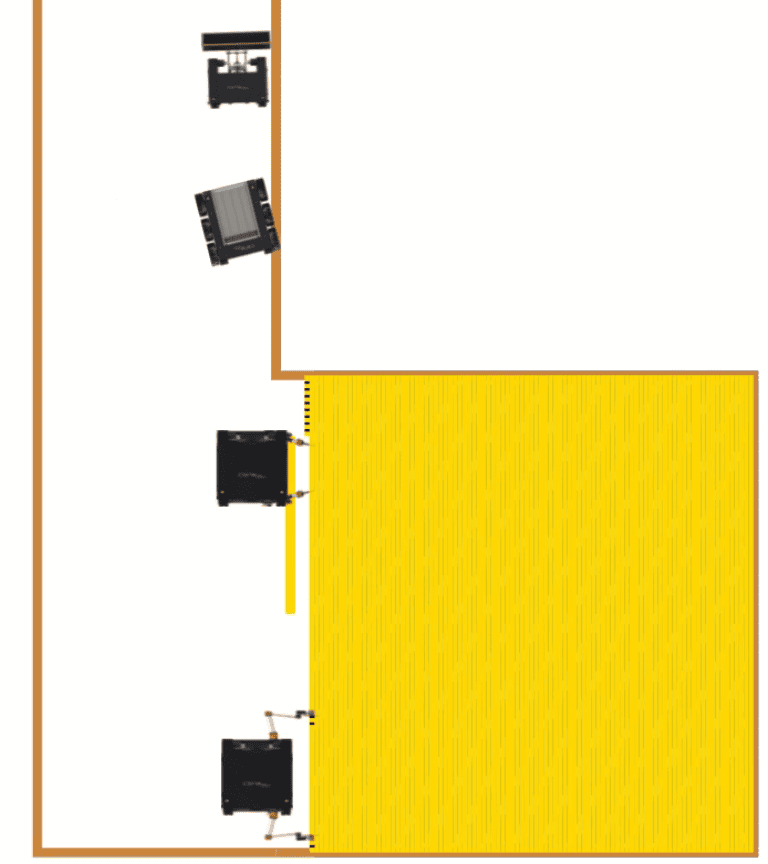
- Client :
- Category :Discrete Events, Fluid Library, Material Handling Library
- Project Url :
- Date :January 31, 2025
Challenge
This project represented mining operations conducted by AI-powered swarm robotic mining systems with three types of robots: excavators, collectors, and surveyors. The challenge was to study the operational behavior of these robots for a given layout and understand how different setups of these robots would impact performance metrics.
Excavators are robots that have two arms with different possible configurations. Each arm can be either a chisel or a saw, and different configurations of these arms would lead to different behavior during mining operations. An excavator with a chisel and a saw can operate independently, while in any other case, two of these excavators must work as a team.
As the rock pile accumulates, collectors must remove this pile. Again, there are two possible configurations for these collectors. Either they have a way to carry ore, acting as collectors and haulers, or they have to team up with a hauler that will be the one taking the material out of the mining area.
Additionally, there are surveyor robots that are used for mapping purposes, and there are also many operational decisions to be taken into consideration there such as the distance to the other robots, and the frequency of scanning.
Finally, the configuration of the mine layout plays an important role on the strategy used to coordinate all the robots to maximize the throughput of material.
In addition to the robotic swarms, conventional equipment is used to transport material from the underground stockpiles up to a processing circuit. Once the stockpiles reach a certain volume, a loader and a hauler will enter the mine and collect the material.
Solution
A model was built in AnyLogic as a first approach to tackle this problem using the material handling library, the fluid library, using a set of almost 30 different agents to develop the full model architecture.
One of the most important things for this development was to be able to build the mine layout automatically as the swarming strategy and technology used would change depending on the configuration of the stopes, the corridor and the space available for movement. For that reason, the layout was built completely in an Excel file that was read from AnyLogic to construct the mine configuration before the start of the simulation.
Additionally, as this was the first step for building a smarter swarming behavior with AI, an expert system with behavioral rules was built in order to develop the team work strategy for the set of robots. This was integrated with the obstacle avoidance feature of the AnyLogic material handling library, allowing to reach performance results similar to what would be expected with AI.
The following images show 2 configurations, on the left an excavator with chisel and saw and a collector that is also able to haul, on the right, 2 excavators working as a team, one chisels, the other saws. Also the collector works in a team with the hauler to move ore out of the way.
Outcome
The simulation was used to understand the performance of different combinations of robots for different layouts, which was very relevant as the operational results were unknown and unknowable without a simulation model. As some of these robots didn’t even exist, it was also used to determine what robots to build first, as some combinations showed to work better with certain robot types.
Project Features
Industry: Mining, Robotics
Models: Discrete-Events
Duration: 1 month


